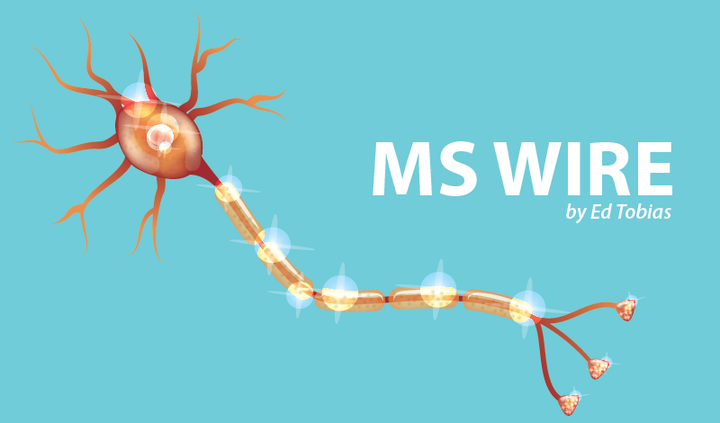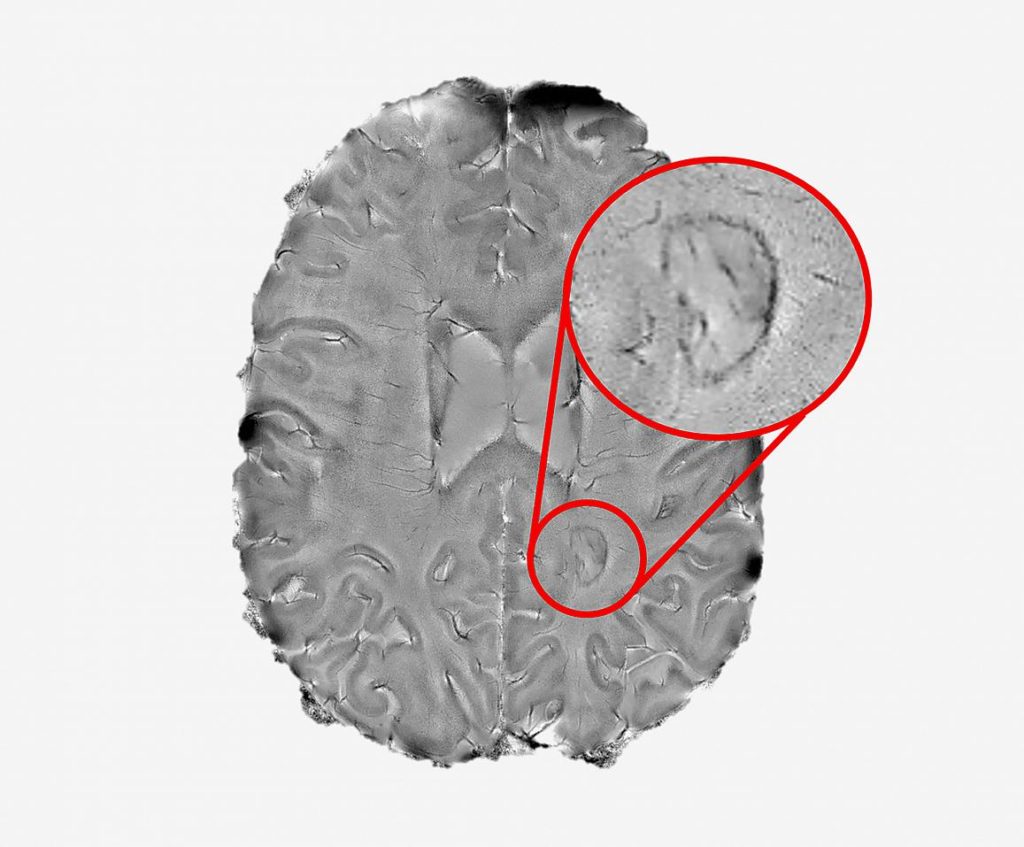MS Progression’s Speed Tagged to ‘Smoldering’ Brain Inflammation
Written by |

The presence of chronic active lesions in the brain may provide a clue as to how quickly multiple sclerosis (MS) symptoms will progress. Researchers at the U.S. National Institutes of Health (NIH) call these lesions “smoldering inflammation.” Their study, just published in JAMA Neurology, indicates that the more lesions you have, the more likely your MS will be aggressive.
These lesions, described as “dark rimmed spots,” are difficult to see. So the researchers used a super-strong MRI scanner to look for them. (You can see what one looks like in the image below).

MRI image of a dark-rimmed spot (Courtesy: Reich lab, NIH/NINDS)
Many rimmed lesions mean faster MS progression
According to an NIH news release, “patients who had four or more rimmed lesions were 1.6 times more likely to be diagnosed with progressive MS than those without rimmed lesions. Moreover, these patients developed motor and cognitive disabilities at a younger age than the patients who had no rimmed lesions.”
The researchers also reviewed MRI images taken over 10 years or longer for a small subset of the study group. They found that their rimless lesions generally shrank over the decade, but their lesions with rims either grew or remained the same size.
Study results may lead to new treatments
Daniel S. Reich, PhD, a senior investigator at NIH’s National Institute of Neurological Disorders and Stroke, said: “Our results support the idea that chronic active lesions are very damaging to the brain. We need to attack these lesions as early as possible. The fact that these lesions are present in patients who are receiving anti-inflammatory drugs that quiet the body’s immune system also suggests that the field of MS research may want to focus on new treatments that target the brain’s unique immune system — especially a type of brain cell called microglia.”
Microglia cells mediate immune responses in the central nervous system.
Reich said the NIH Clinical Center is looking for patients who want to participate in studies like this one. “We hope these results will help test the effectiveness of new therapies for this [aggressive] form of MS and reduce the suffering patients experience.”
You’re invited to visit my personal blog at www.themswire.com.
***
Note: Multiple Sclerosis News Today is strictly a news and information website about the disease. It does not provide medical advice, diagnosis, or treatment. This content is not intended to be a substitute for professional medical advice, diagnosis, or treatment. Always seek the advice of your physician or other qualified health provider with any questions you may have regarding a medical condition. Never disregard professional medical advice or delay in seeking it because of something you have read on this website. The opinions expressed in this column are not those of Multiple Sclerosis News Today or its parent company, Bionews Services, and are intended to spark discussion about issues pertaining to multiple sclerosis.






Dan Madden
Would this suggest patients with rimmed lesions might want to stop using Anti-Inflammatory Drugs?
Also, if you need a "super-strong MRI" how did these show up on 10 year old MRI's? Should patients request a review of their old MRI's?
Thank you
Ed Tobias
Hi Dan,
I'm not qualified to suggest when someone might want to start or end a treatment.
Regarding your second question, though 7T strength MRIs ("super strong") were only given FDA approval for clinical use about two years ago they've been used in research settings for over ten years.
Ed
Anita
All of this makes sense. Can our docs see these rimmed lesions on existing MRIs?
Ed Tobias
The rimmed lesions would be appear only if the images were taken using a high contrast MRI, called a 7T. The 7T model was only approved for use in the U.S. less than two years ago and there are only a couple that are in use. They're also very expensive. So, unless your images were taken with a 7T, and that's very unlikely, the rimmed lesions wouldn't be seen.
Ed